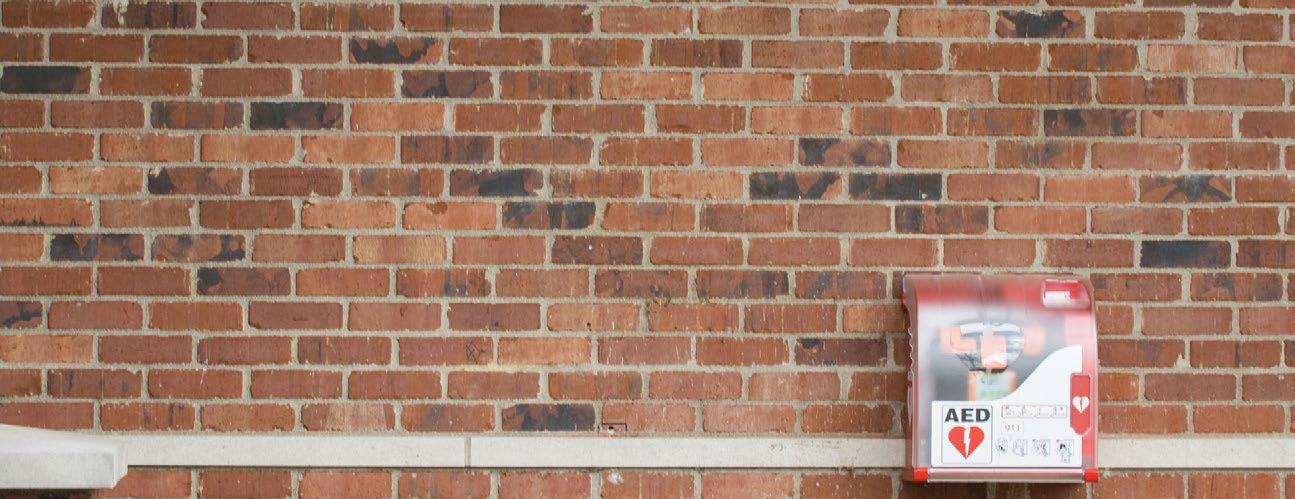
3 minute read
Lifesaving Devices Now at City Parks
Westerville Parks and Recreation is encouraging anyone visiting 10 City parks this summer to become familiar with the location of critical lifesaving devices. Staff installed automated external defibrillators, or AEDs, at Alum Creek Park South, Heritage Park, Highlands, Hoff Woods, Huber Village, Metzger, Millstone Creek, Towers, Walnut Ridge and the Westerville Sports Complex in the spring.
Recreation Administrator Katie Sass took the lead on drafting Westerville Parks and Recreation’s policy, emergency action and deployment plans. She says the City already had mobile AEDs on hand during sports programming and at the Westerville Community Center, Everal Barn and Homestead, Highlands Park Aquatic Center and the City’s parks maintenance building.
“We want to ensure all park and facility users in our community feel safe, and knowing there are lifesaving tools available during those unpredicted times will help ensure everyone feels comfortable using those spaces,” said Sass.
AEDs are designed to help bystanders confidently assist someone experiencing a cardiac arrest. The equipment analyzes an individual’s heart rhythm and delivers an electric shock when needed. Once powered on, the devices use diagrams and voice prompts to guide users through proper electrode placement as well as instructions to start, stop and restart CPR.
According to the American Red Cross, more than 15% of cardiac arrests happen in public and defibrillation is the third most important step to increasing the likelihood of survival and recovery.
The new devices are marked with clear signage and housed in red cabinets at combined restroomshelter facilities, outside of restrooms in parks with separate shelters and restrooms, and outside of the hockey rink storage building at Alum Creek Park South.
Quick Action Advised to Help Save Lives
When someone experiences cardiac arrest, the steps those around them take—and the time it takes them to do so—can mean the difference between life and death. The odds of surviving a cardiac arrest decrease by about 10% with every minute that passes without defibrillation, according to the American Red Cross.
If an individual collapses, stops breathing or shows no sign of a pulse, bystanders should follow the following guidelines provided by the American Red Cross:
CHECK: Ensure the scene is safe before approaching the individual. Tap them forcefully on the shoulder and loudly ask them if they need help. If they are unresponsive, call 911.
CALL: Call 911 and place the phone on speaker mode. Never assume other bystanders will call; instead, point to a person and tell them to call 911. If a third person is available, have them run to get an AED.
If no one else is there, call 911 while retrieving the nearest AED and return to the individual.
CARE: Follow instructions from the 911 communicator. Place the AED next to the individual and power on the device. Follow the instructions and maintain communication with 911 until emergency medical services arrive and take over.
A map of City parks can be found on page 77.










